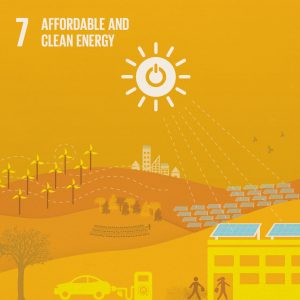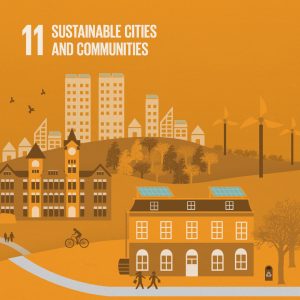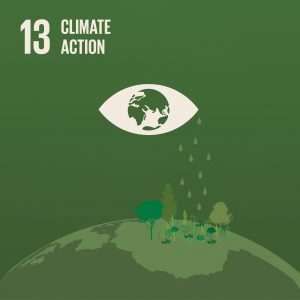“If putting the future of life at the heart of everything we do is not central to our purpose and destiny, why are we here?” Paul Hawken
In a 1946 New York Times article, the eminently quotable Albert Einstein said, “a new type of thinking is essential if mankind is to survive and move toward higher levels.”
Exactly. This is why I am always on the lookout for paradigm-shifting, new types of thinking that give us fresh and better ways to understand our dire circumstances and what we can do about them.
Project Drawdown, a framework for solving global warming and climate change, is one example. Doughnut Economics, a design for an economic system that creates “a safe and just place for all of humanity within the means of our life-giving planet,” is another.
A related framework that has recently been explicated by Paul Hawken is the idea of regeneration. Merriam-Webster defines regeneration in part as “spiritual renewal or revival; renewal or restoration of a body, bodily part, or biological system (such as a forest) after injury or as a normal process.”
Hawken explains: “Regeneration means putting life at the center of every action and decision. It applies to all of creation…and it applies equally to families, communities, cities, schools, religions, cultures, commerce, and governments.”
The need for regeneration is increasingly obvious as our economic structures reveal themselves to be ever more degenerative, causing enormous injury to people and the biosphere while providing short-term benefits to an ever-narrowing few. Poverty, soaring economic inequality, the frightening weakening of democracies, the mass extinction of species, and the climate crisis are just some of the reasons that we think and act in new ways.
In the fall of 2021, Hawken published Regeneration: Ending the Climate Crisis in One Generation. He focuses on climate because he is convinced that solving the climate crisis will heal every equity, justice, and ecological wound that exists. From the Regeneration website: “Regeneration is a radical new approach to the climate crisis, one that weaves justice, climate, biodiversity, and human dignity into a seamless tapestry of action, policy, and transformation that can end the climate crisis in one generation.”
“A seamless tapestry of action” is the key. Regeneration is an invitation to “the bulk of humanity” to focus on current human needs. By doing so, we will create a safe and just world for all and transform global warming and climate change from an urgent crisis to a manageable problem.
The nations of the world recognize degenerative conditions globally and, in response, created in 2015 seventeen global goals, the Sustainable Development Goals (SDGs), to transform these conditions and trajectories.
Let’s apply the regeneration framework to just one of the goals, SDG 11, Sustainable Cities and Communities, and see what that might look like. Regeneration offers these outcomes:

Photo by muentzer; Creative Commons
Net Zero Cities. Cities as diverse as Reykjavik, San Francisco, Barcelona, Hamburg, Sydney, Munich, Vancouver, and San Diego have all made commitments to achieve 100% renewable energy. More than 100 cities already get a minimum of 70% of their power from renewables.
Buildings and Carbon Architecture. According to Hawken, “Regenerative construction means looking at the ecological, social, and personal health impacts of every building.” That can be accomplished by “deep-energy retrofits” that transform existing buildings. That means addressing heating and cooling, insulation, windows, lighting, and using renewable energy. As for new construction, there are exciting new technologies like cross-laminated timber (CLT). The sustainability advantages of this technology are through the roof (so to speak).

Photo: Markus Spiske; Creative Commons
Urban Farming. There are abundant possibilities to grow food in cities that can provide fresh produce and improve local food security. For example, Detroit was built on some of the richest farmland in the Midwest, and one positive development as the city emerges out of its worst days is open space that is now growing fresh, local food. Urban farms capture and purify stormwater, reduce the urban heat island effect, provide habitat for pollinators and other animals, and reduce the use of fossil fuels. Another form of urban farming with similar ancillary benefits is rooftop gardens, a practice thousands of years old. A third form is vertical farming, using aeroponics to grow food in buildings. One academic study found that converting 200 abandoned warehouses in New York City to vertical farms would produce enough vegetables to feed the entire city.

Photo: CHUTTERSNAP – Creative Commons
The Nature of Cities. “Innovative city planning is now placing the city within a forest rather than the other way around.” Regenerative cities make nature and the natural world a priority. Open spaces, parks, gardens, interconnected greenways, increases to tree canopy, green infrastructure for managing and purifying stormwater, and the creation of urban forests, are examples. All contribute immensely to human wellbeing by creating cooler temperatures, reconnecting urbanites to the natural world, buffering noise, providing places to gather, and warding off “environmental generational amnesia” that occurs when successive generations of children raised in cities never experience the natural world, upon which they ultimately depend for physical, emotional, and spiritual wellbeing.

Photo: JeffaCubed – Creative Commons
Urban Mobility. Cities have become automobile-centric rather than people-centric. Air pollution, noise, congestion, and accidents – especially auto/pedestrian accidents – are the result—auto-centric cities, in many ways are unpleasant. A growing number of cities are banning gasoline- and diesel-powered vehicles and some cities are completely banning autos in certain areas. Public transportation, bicycle lanes, scooters, and pedestrian zones can be integrated to create transportation systems that significantly reduce the need for autos. And there is this: “For city residents, studies demonstrate a strong correlation between car-free mobility and feelings of neighborliness and a sense of belonging to a community.”

Photo: alexabboud – Creative Commons
The 15-Minute City. “Imagine a city where everything you needed could be found within a 15-minute walk or bike ride from your home….” Imagine walking, the oldest of human activities, becoming the basis for city design. According to Regeneration, Paris is working to achieve this. The cities of Portland, Seattle, Melbourne, Madrid, and others are making the 15-minute city a guiding principle for their next Comprehensive Plans. Imagine parks being created out of parking lots. Early evidence shows that a growing number of cities are doing more than imagining.
The book Regeneration offers more than five dozen solutions in nine categories and six overlapping frameworks for collective action. I don’t know about you, but I would love to live in a city like the one described above. Sustainable cities are possible, and cities around the world are working to create them.
I find the regeneration framework inspiring and energizing. It is about healing, restoring, creating, rather than combating. It is about connecting with life rather than running roughshod over it.
Joseph Campbell said, “The goal of life is to make your heartbeat match the beat of the universe, to match your nature with Nature.” The regeneration movement invites and requires us to do just that.
Learn about the SDGs & AU and Auburn’s contributions related to this post.







